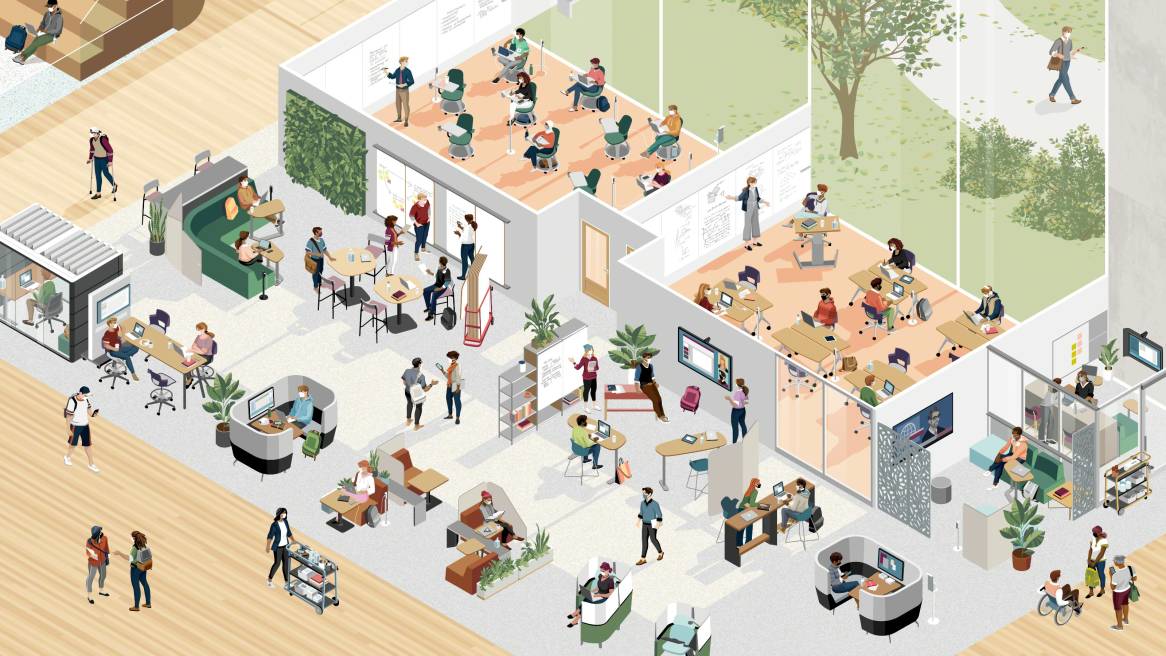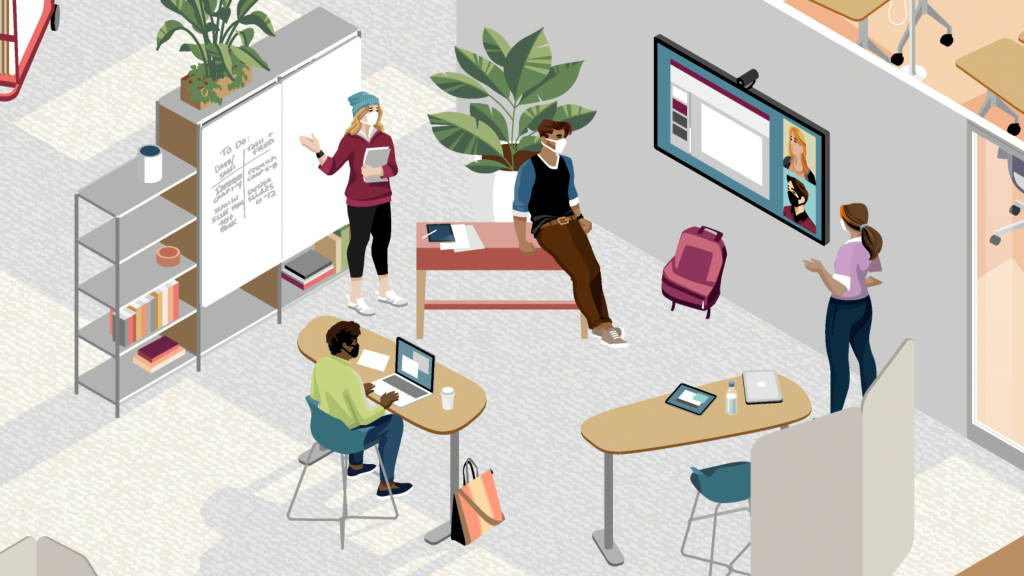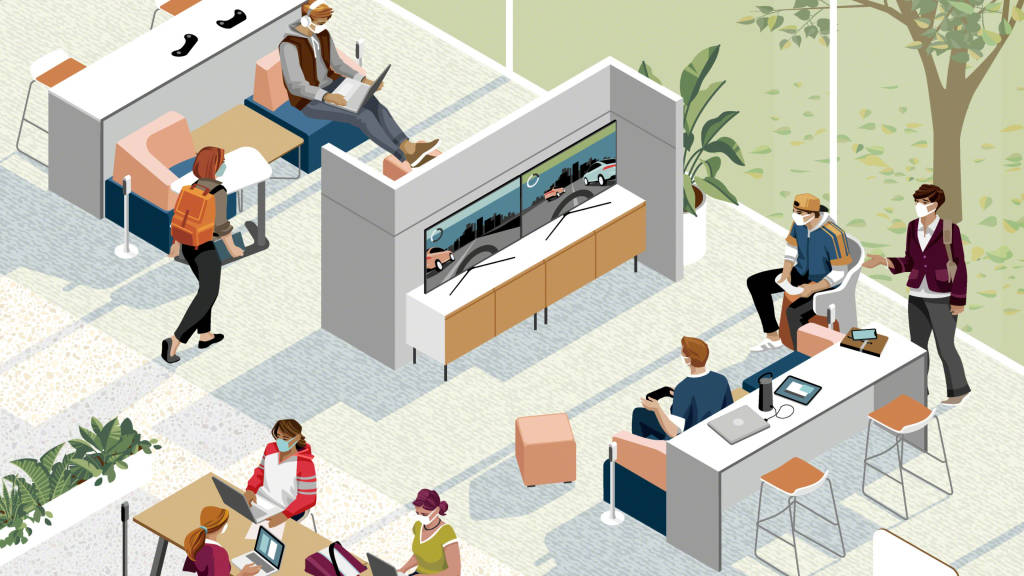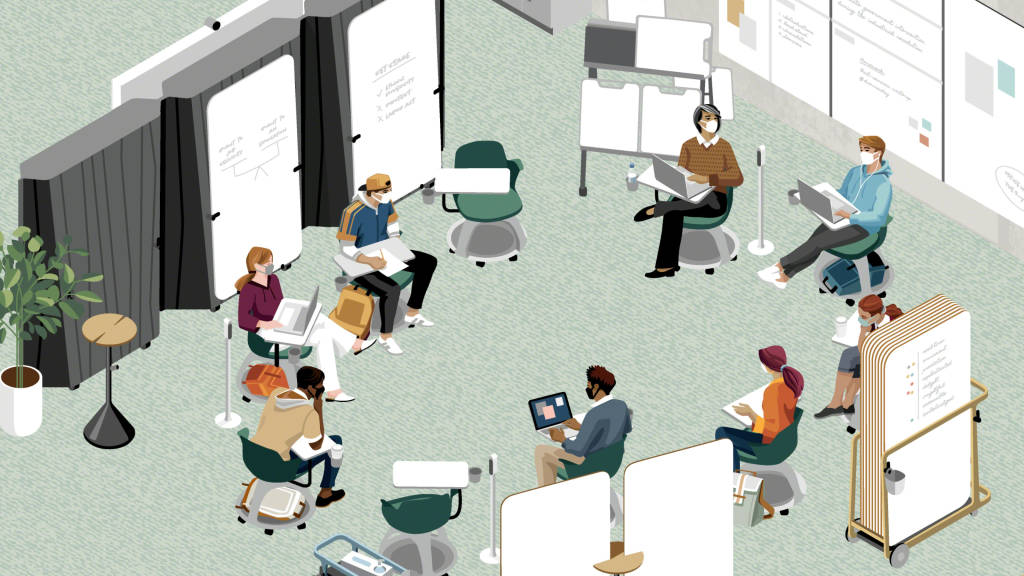Even before the pandemic, education was undergoing a transformation that will go on long after the virus threat subsides. The experiences students, educators and administrators have had during the pandemic has to have accelerated and amplified trends in education that were already in motion. Online and blended learning has revealed inequities and how many physical learning environments simply can’t meet the pedagogical needs and technology demands. Additionally, wellbeing has suffered, and students and teachers have struggled, unable to teach or learn effectively.
What Students and Educators Need and Expect
Everyone has had a vastly different experience teaching and learning from home. Those experiences shape their expectations for what they want the learning experience to be like in the future.
To Be Safe and Feel Safe
Educational institutions didn’t have to consider how to mitigate the spread of disease, but people are now pandemic aware. They have new expectations about air quality, facility cleanliness, social distancing, density and adherence to safety protocols that did not exist prior to the pandemic.
A Deeper Sense of Belonging
Students, educators and administrators all report a feeling of isolation. To address this moving forward, educational institutions will need a more human-centered approach to education that creates a sense of belonging. When a sense of belonging is lacking, both educators and students are negatively impacted. Students’ lack of wellbeing, for example, is related to lower achievement, retention and graduation rates, which directly affect funding. Meanwhile, educator burnout results in higher absenteeism, poor wellbeing, increased healthcare costs and higher turnover rates.
To Be Effective
Online learning presents new challenges when compared to a traditional classroom. According to a McKinsey Report, a significant portion of students report that COVID-19 had affected their readiness, willingness, or ability to attend a higher education institution. For example, 30% of high school students feel academically unprepared for university. Students’ ability to succeed in a remote-learning environment also differs greatly by income levels. Less than half (40%) of students from lower-income households report being able to get the necessary equipment for remote learning compared with 72% of students from high-income households.
Holistic Comfort
A more holistic approach to comfort is another expectation students, educators and administrators now have as many had to learn, teach and work from sofas, kitchen tables and even beds. Learning environments will need to support physical comfort, as well as emotional and cognitive comfort. People will need a range of postures, settings and the ability to move, as well as an emotionally safe and supportive culture for teaching and learning. Learning spaces should be designed to create a sense of inclusiveness and community and provide calming spaces for respite.
Greater Control
The Steelcase Learning Environment Evaluation (LEE) study has found both students and instructors have reported they want more control over their learning environments. People want options so they can choose where to learn or work and they want the ability to adapt spaces based on what they’re doing. The LEE study reports a 92% increase in students who say they often or always move furniture to support their learning. Instructors report a 47% increase when asked if they agree or strongly agree that they want to be able to move furniture into new layouts. Access to mobile furniture and different seating options and postures promote a greater sense of student agency.
Macro Shifts In The Learning Experience
To be able to create better teaching and learning experiences that provide students and educators with what they want and expect, institutions will need to pay attention to four macro shifts in how they think about space.
Design Safer Schools
Behavioral strategies, such as mask wearing and distancing, need to be augmented with changes to the built environment. Educational institutions can make their buildings even safer by intentionally designing the built environment to help mitigate disease transmission. Understanding how pathogens move through an environment will help educational institutions develop new systemic strategies to help prevent infections.
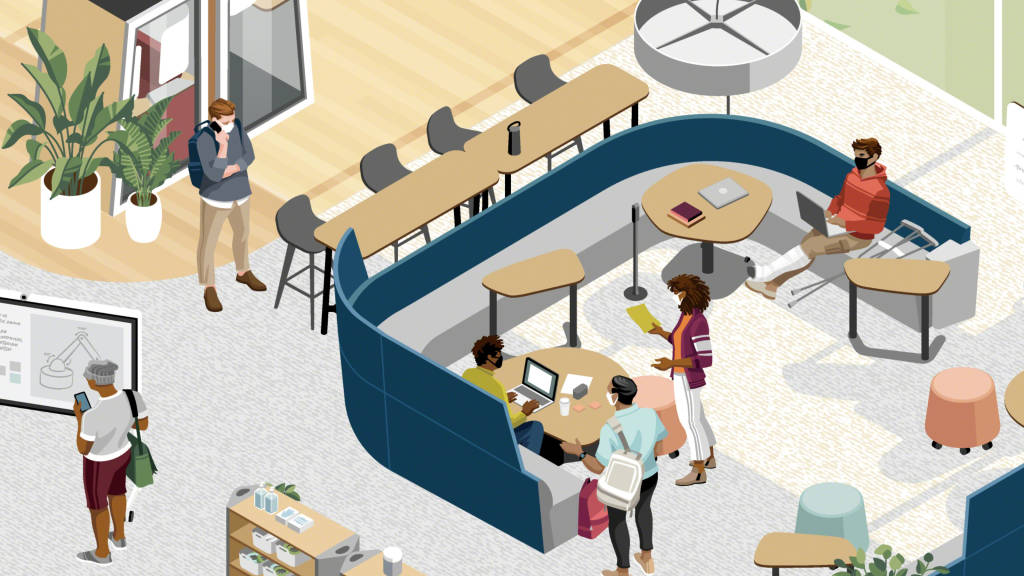
Design for Effectiveness
Students and educators have struggled throughout the pandemic. Learning and teaching effectiveness have dropped. Moving forward students and educators will need multi-modal learning environments that balance individual and group needs and multiple modes of learning. For example, libraries can be designed to support group work and not just individual study. Schools will also need to provide spaces that enable better hybrid and blended learning experiences.
Design to Inspire
People who have lived through a crisis want inspiration — they need to be a part of something meaningful. Educational institutions will need to create a sense of belonging and foster community. When students are able to connect with their instructors and have access to inspiring spaces that build a strong community, this can lead to better learning outcomes. Intentionally-designed learning environments can foster meaningful interactions and signal that change and adaptation are part of their culture and something to be embraced.
Design for Flexibility
Historically designed for permanence, buildings have been dominated by fixed architecture, power and furnishings. Going forward, educational institutions will offer more flexible environments that can adapt easily to accommodate multiple learning modes. Schools will need to embrace multi-use spaces that can support diverse types of activities. Furnishings will easily move to allow spaces to expand and contract as needed.
While living through a crisis has not been easy on anyone, it has accelerated changes that were already underway to improve the learning experience. Leaders in education can use this moment as a catalyst for reinventing learning spaces and explore new approaches for delivering quality education.
We can help
Let us assist you in developing teaching and learning spaces as you navigate what’s next in education.
Learn Better: Explore the Design Principles in Practice
Learn about the four new design principles education leaders need to consider to create better learning spaces.
COVID-19 Accelerates Blended Learning
The recent crisis is showcasing the upside of a blended learning approach to education.
Designing for Blended Learning
As blended learning becomes a viable solution for institutions, we identify the learning spaces that need to be rethought.

